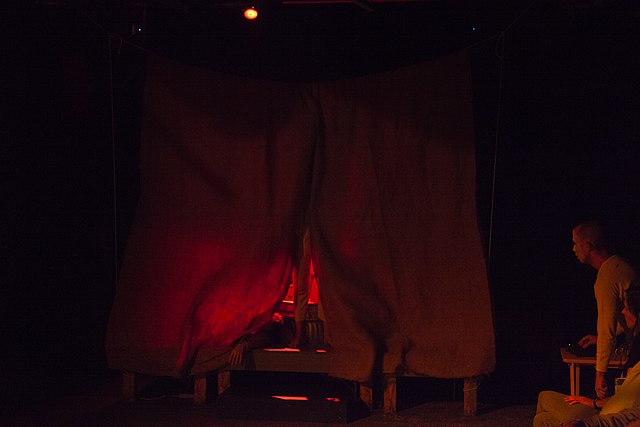In theatre, a lighting designer works with the director, choreographer, set designer, costume designer, and sound designer to create the lighting, atmosphere, and time of day for the production in response to the text while keeping in mind issues of visibility, safety, and cost. The LD also works closely with the stage manager or show control programming, if show control systems are used in that production. Outside stage lighting, the job of a lighting designer can be much more diverse, and they can be found working on rock and pop tours, corporate launches, art installations, or lighting effects at sporting events.
The Broadway musical A Chorus Line was lit using conventional lighting instruments.
Lighting at the 2005 Classical Spectacular Concert
Scenic design, also known as stage design or set design, is the creation of scenery for theatrical productions including plays and musicals. The term can also be applied to film and television productions, where it may be referred to as production design. Scenic designers create sets and scenery to support the overall artistic goals of the production. Scenic design is an aspect of scenography, which includes theatrical set design as well as light and sound.
Set design model by Marcel Jambon for an 1895 Paris production of Giuseppe Verdi's Otello.
Set design for the New Zealand Opera's 2016 production of Mozart's Magic Flute
Scenic design for The 2010 Family Series, by Glenn Davis
A simple red curtain set design for the Oresteia presented by Stairwell Theater, 2019






